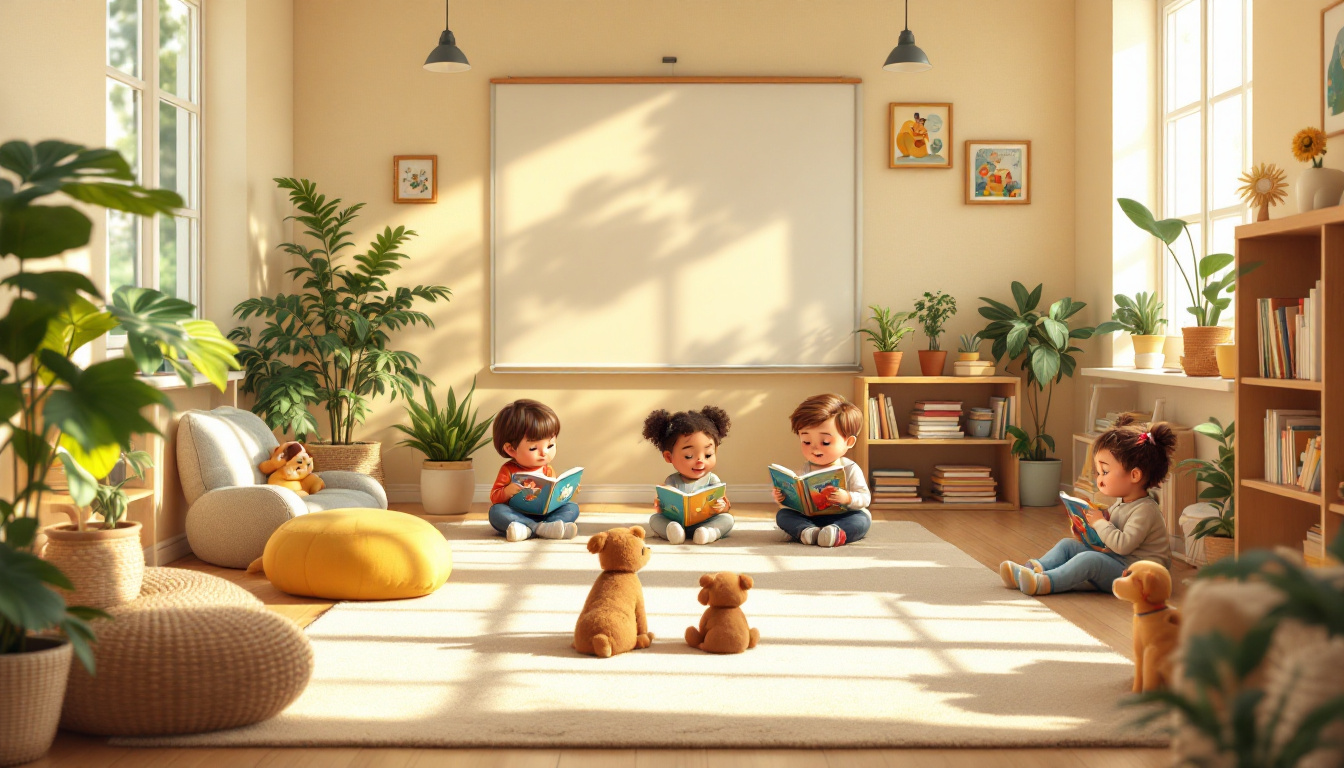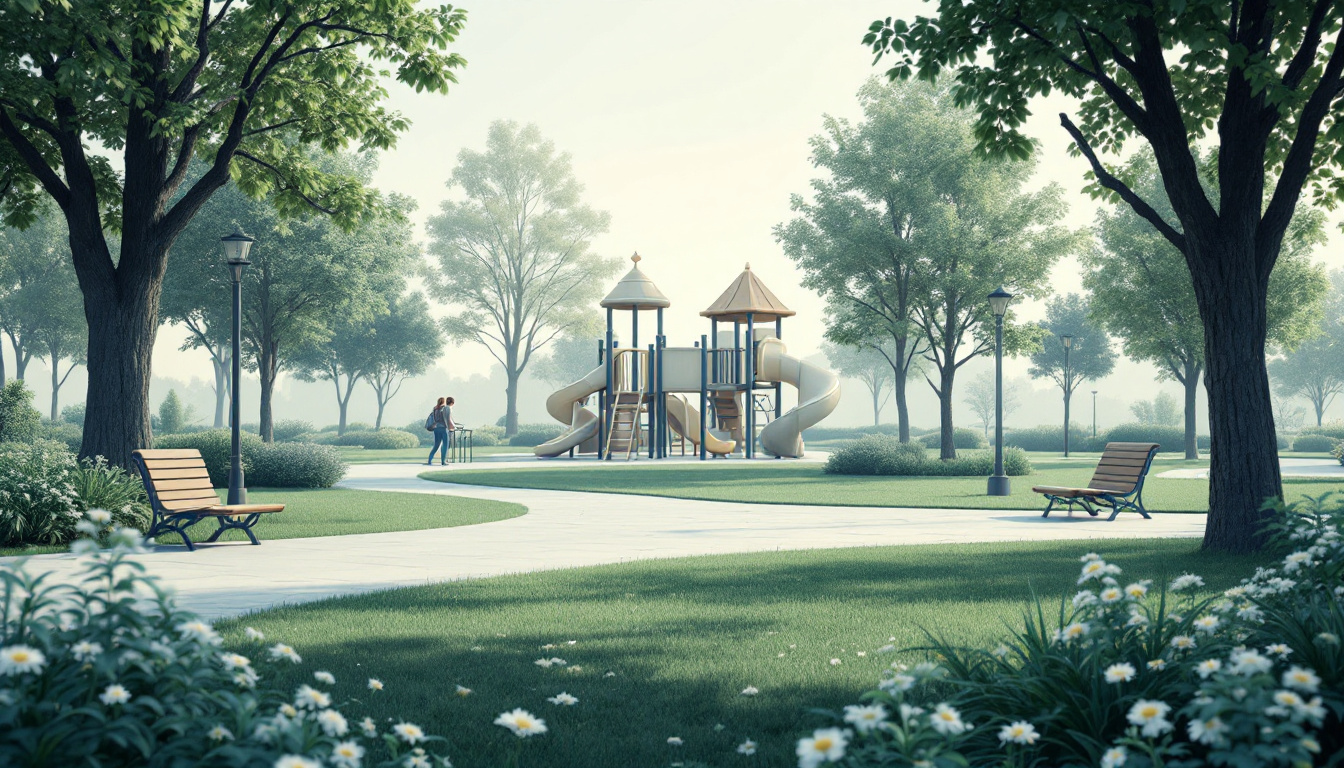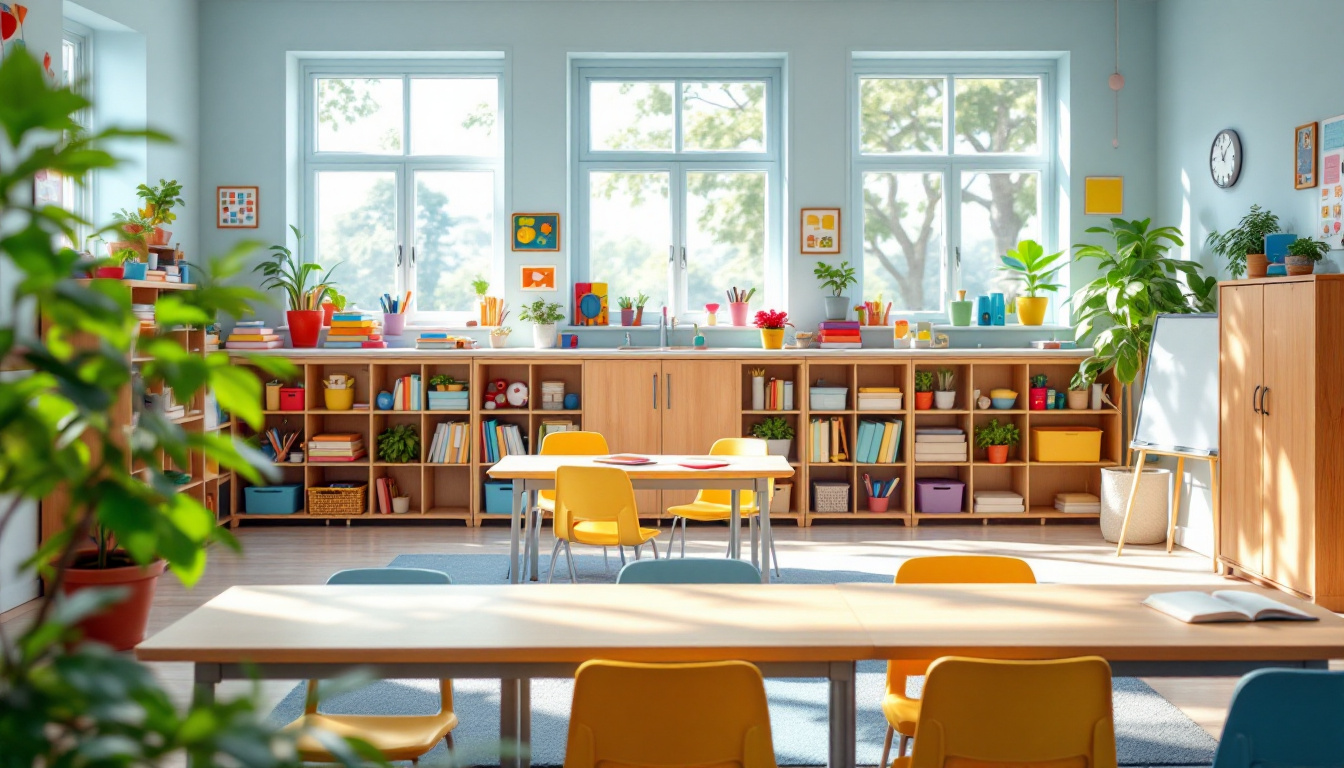How to Create a Sensory-Friendly Home Environment
Crafting Comfort: Designing Sensory-Friendly Spaces


Understanding Sensory-Friendly Spaces
In today's fast-paced world, creating a home environment that caters to the sensory needs of individuals—especially those with sensory processing challenges like autism—is paramount. These sensory-friendly spaces are thoughtfully designed to minimize overwhelming inputs from all eight senses: sight, sound, taste, smell, touch, vestibular, proprioception, and interoception. This understanding sets the stage for crafting areas that are not only inclusive but also calming and empowering. The benefits of such environments are profound, promoting not just comfort but also emotional well-being and improved daily function for individuals across the sensory spectrum.
Defining Sensory-Friendly Spaces

What are sensory-friendly spaces?
Sensory-friendly spaces are specially designed environments that aim to minimize overwhelming sensory input, thereby ensuring comfort and accessibility for individuals with diverse sensory needs. These spaces thoughtfully consider all eight sensory systems: sight, hearing, smell, taste, touch, vestibular, proprioception, and interoception. This holistic approach is crucial, particularly for those experiencing sensory processing challenges such as autism or ADHD.
The design of sensory-friendly spaces incorporates practical strategies aimed at improving sensory experiences. For instance, using softer, dimmable lighting can create a calm atmosphere, while minimizing background noise and establishing designated quiet zones helps those who may be easily distracted. Additionally, these spaces can remain inviting for neurotypical visitors, promoting inclusivity and fostering a sense of community.
Which sensory systems are important?
All eight sensory systems play vital roles in how individuals perceive their environments:
| Sensory System | Description | Considerations in Design |
|---|---|---|
| Sight | Visual input affecting mood and focus | Soft lighting, muted colors, minimal clutter |
| Hearing | Sound sensitivity impacts comfort | Reduced noise levels, soundproofing |
| Smell | Olfactory triggers can provoke discomfort | Scent-free areas, natural cleaning products |
| Taste | Food presentation affects dining experience | Clear food choices, varied textures |
| Touch | Tactile sensitivities require careful choices | Soft fabrics, diverse textures |
| Vestibular | Balance and movement impact behavior | Opportunities for sensory movement |
| Proprioception | Awareness of body position is crucial | Weighted blankets, therapy tools |
| Interoception | Internal body signals influence comfort | Support for emotional regulation |
Benefits of these environments
Creating sensory-friendly environments yields numerous benefits, including:
- Reducing stress and anxiety for neurodivergent individuals.
- Enhancing emotional regulation, focusing ability, and communication skills.
- Promoting better social interactions both at home and in community settings.
- Enabling greater independence and improved learning opportunities.
In conclusion, the careful design of sensory-friendly spaces is pivotal for supporting not only those with sensory processing differences but also creating welcoming environments for all individuals. Through thoughtful adjustments and design techniques, these spaces empower users to thrive.
Practical Home Adaptations for Autism

What are some home adaptations for autism?
Home adaptations for autism can significantly improve comfort and well-being by addressing sensory processing needs.
Adjusting Lighting
Using dimmer switches and warm-toned light bulbs creates a calming atmosphere. Avoid harsh fluorescent lights that can cause overstimulation. Natural light is essential, so consider blackout curtains to manage brightness levels effectively.
Soundproofing Measures
To minimize distress from unpredictable sounds, soundproofing is critical. Implement noise-reducing curtains, sound-absorbing rugs, and consider placing white noise machines strategically throughout the home.
Designated Safe Spaces
Creating a safe retreat helps manage overwhelming moments. Equip these spaces with calming items like weighted blankets, plush seating, and sensory toys, ensuring they cater to the child's specific needs.
Organization and Structure
Organizing rooms with clear storage containers and visual aids such as schedules can provide structure. This reduces anxiety by promoting predictability in daily routines, making transitions smoother for children.
Color Choices and Furniture Arrangements
Incorporate calming colors like soft blues and greens in walls and decor. Flexible furniture arrangements, including soft seating and clutter-free spaces, allow room for relaxation and movement, contributing to a serene home environment.
Creating Sensory-Friendly Homes for Toddlers

How to Create a Sensory-Friendly Home Environment for Toddlers?
Creating a sensory-friendly home environment for toddlers involves several key strategies. First, minimizing clutter is essential. A decluttered space reduces visual overstimulation, promoting a calm atmosphere that toddlers can easily navigate. Using neutral colors rather than bright hues creates a serene environment, which is crucial since toddlers may react strongly to vivid visuals.
Incorporating various lighting options is vital. Natural light is beneficial for regulating moods, while dimmers allow caregivers to adjust illumination according to the toddler's comfort level. This flexibility helps cater to their sensory needs, especially during bedtime.
Establishing routines is another effective strategy. Visual schedules can aid toddlers in managing transitions throughout the day, helping them understand what comes next and reducing anxiety.
Designate safe and inviting spaces within the home. A calm corner filled with sensory tools—like soft blankets, textured toys, or weighted lap pads—provides a retreat when toddlers feel overwhelmed. This not only supports emotional regulation but also encourages independent self-soothing.
Strategies for Toddler-Specific Sensory Needs
Here are some additional strategies that further cater to toddlers’ sensory needs:
- Soft Textures: Use various soft fabrics for seating and toys to ensure tactile comfort.
- Safe Play Areas: Create padded play zones where toddlers can safely explore and engage with sensory materials.
- Natural Elements: Incorporate nature, like plants or water features, to enhance relaxation and connection with the environment.
- Movement Opportunities: Provide safe movement options like small swings or soft climbing structures to accommodate energetic play.
With these strategies, creating a sensory-friendly home can significantly improve a toddler's comfort and emotional well-being.
Crafting Personal Sensory Spaces at Home

How do you make a sensory space at home?
To create a sensory space at home, start by selecting a quiet area where you can minimize distractions. This is vital in fostering an environment conducive to relaxation and self-regulation.
Next, incorporate various sensory items. For example, use soft lighting, avoiding harsh fluorescents, and opt for warmer tones instead. Consider adding calming elements like fiber optic lights or bubble tubes that engage the visual sense without overwhelming it.
Soothing sounds play an essential role too. Sound machines with nature sounds or white noise can provide a gentle auditory backdrop. Pair these sounds with assorted aromas; essential oils or calming scented candles help create a fragrant atmosphere promoting relaxation.
Focus on tactile experiences by adding textured elements such as cushions, soft fuzzy blankets, or textured wall panels. Choose wall colors wisely; softer hues like light blues, greens, or lavenders promote tranquility.
Finally, ensure the experience is user-directed. Allow individuals to engage with the sensory elements at their own pace, facilitating effective self-regulation and relaxation.
Steps to build a sensory sanctuary
Building a sensory sanctuary requires thoughtful consideration of various sensory needs:
| Step | Description | Purpose |
|---|---|---|
| 1. Identify Needs | Survey household members to understand their unique sensory preferences. | Personalized adjustment |
| 2. Select Space | Choose a dedicated quiet area for sensory activities. | Minimizes distractions |
| 3. Optimize Light | Use dimmable, soft lights and blackout curtains for comfort. | Reduces visual overload |
| 4. Soundproofing | Incorporate rugs, curtains, and sound machines to dampen noise. | Alleviates auditory stress |
| 5. Personalize Decor | Use calming colors and textures that resonate with users. | Enhances emotional safety and comfort |
| 6. Engage Users | Allow individuals to choose preferred sensory items. | Encourages autonomy in sensory exploration |
These steps can significantly improve comfort and well-being for individuals with different sensory sensitivities.
Showcasing Sensory Environments
Do you have examples of sensory environments?
Sensory environments are thoughtfully crafted spaces that cater to the diverse sensory needs of individuals, particularly those facing challenges such as autism or ADHD. For instance, many schools are adopting sensory-friendly designs. These include:
- Soft Lighting: Utilizing dimmable lights or warm-toned bulbs instead of harsh fluorescents to create a calming atmosphere.
- Noise-Reducing Materials: Installing carpets and heavy curtains to absorb sound, helping to minimize auditory overload.
- Calming Color Palettes: Opting for soothing colors like light blue, green, or lavender on walls to foster relaxation.
Another powerful example is sensory rooms, which often include:
- Textured Wall Panels: These provide tactile stimulation, encouraging exploration through touch.
- Bubble Tubes: Visual effects from these tubes can mesmerize and soothe children, promoting mind-calming engagement.
- Comfortable Seating: Soft bean bags, weighted blankets, or cushioned areas create inviting spaces to retreat.
Beyond indoor settings, outdoor environments also play a vital role. For example,
- Forest Play Areas: These rich sensory experiences allow kids to interact with nature, enhancing mood and providing opportunities for active play while ensuring relaxation.
Key features in effective sensory environments include quiet zones, scent-free areas, and layouts that limit visual clutter, helping individuals better manage sensory overload.
Transitioning to Autism-Friendly Homes

How do I make my home autism-friendly?
To create an autism-friendly home, approach it with empathy towards sensory experiences. It begins with understanding how individuals on the spectrum perceive their environment differently, addressing their sensory sensitivities thoughtfully.
Key Steps to Consider:
- Create Consistent Routines: Establishing a regular schedule can offer security and predictability, which helps ease anxiety.
- Designate Quiet Spaces: Identify areas in your home where individuals can retreat to when feeling overwhelmed. Soft seating and calming decor in these zones can enhance relaxation.
- Reduce Irritating Inputs: Minimize harsh noises by incorporating sound-absorbing materials and limit intense smells by using low-scent products.
- Communicate Needs Openly: Engage in dialogue with your family members about their sensory preferences and triggers, ensuring a supportive atmosphere for everyone.
By implementing these changes, you can create an environment that promotes comfort and reduces stress for those on the autism spectrum.
General Steps to a Sensory-Friendly House
How to make a house sensory-friendly?
Creating a sensory-friendly home starts with understanding individual sensory needs. This approach includes adjusting various aspects of the environment to cater to specific sensitivities.
Firstly, consider the lighting. Opt for warmer-toned lights (2,700K-3,000K) instead of harsh fluorescents. Installing dimmer switches can allow for more control over brightness, enabling a calming ambiance.
Next, focus on textures. Adding soft blankets, plush pillows, or a shaggy rug can create comfort. Natural elements, like stones or shells, can also be soothing. Incorporating varied textures allows exploration without overwhelming the senses.
Sound management is also essential. Utilize rugs, heavy curtains, and sound-absorbing panels to minimize background noise. White noise machines can be helpful too.
Incorporating comfortable furniture and organizing spaces to minimize clutter will enhance comfort levels. Create defined quiet areas for relaxation and provide tools like noise-cancelling headphones when needed.
Creating Low Sensory Environments
What is a low sensory environment and how do you create one?
A low sensory environment is thoughtfully designed to minimize overwhelming stimuli. This is particularly beneficial for children who are sensitive to sensory input. To foster such an environment, consider the following aspects:
- Lighting: Use softer, dimmable lighting options like warm-toned lamps instead of harsh fluorescents to create a calming atmosphere.
- Colors: Opt for neutral, muted colors on walls to create serenity, avoiding bright, high-contrast patterns that may agitate sensitive children.
- Sound: Reduce auditory clutter by implementing sound-absorbing materials such as thick rugs and curtains. Noise-canceling headphones can also help children manage overwhelming sounds.
- Designated Quiet Zones: Create areas where children can retreat to when feeling overwhelmed. These spots could include cozy corners with weighted blankets and sensory toys.
- Texture: Provide a variety of tactile objects that children can explore. Soft cushions, plush toys, or sensory bins with textured materials can engage their hands and minds.
- Fragrance: Control scents by using low-scent cleaning products and gradually introducing familiar aromas to avoid distressing reactions.
- Familiar Tastes: Respect dietary preferences and introduce new foods at a comfortable pace to prevent overstimulation during meals.
- Clear Boundaries: Establishing physical boundaries within a space promotes security and grounding for children.
Utilizing the Universal Design for Learning (UDL) framework can further enhance these environments by accommodating diverse sensory needs and supporting children’s self-regulation and engagement.
Techniques for under-stimulated children
For children who may be under-stimulated, creating intriguing sensory experiences can ignite engagement. Here are a few techniques to consider:
- Movement Opportunities: Incorporate activities such as gentle swings or mini-trampolines to cater to the need for movement and play.
- Sensory Bins: Design sensory bins filled with various textures like rice, beans, or sand. These can provide stimulating and exploratory play.
- Visual Supports: Use visual schedules and charts to provide structure, ensuring predictability that enhances comfort and engagement.
- Calming Tools: Equip the environment with calming items such as stress balls or fidget spinners to help children self-regulate and manage their energy levels effectively.
- Interactive Elements: Engage children with tactile walls or art stations where they can create and explore textures and colors at their own pace.
These strategies, when implemented thoughtfully, can significantly bolster comfort and engagement in low sensory environments.
Fostering Inclusivity Through Design
The process of designing sensory-friendly spaces is far more than mere interior decorating; it's a crucial step towards inclusivity and improved quality of life for individuals with sensory sensitivities. By thoughtfully considering each of the sensory systems and adapting spaces accordingly, we create environments that empower those who navigate the world differently. Whether through architectural adjustments or the careful arrangement of sensory tools, these personalized spaces can alleviate stress, enhance focus, and foster emotional well-being. For families, educators, and communities striving towards inclusivity, understanding and implementing sensory-friendly design can be transformative, offering all members a sense of security, comfort, and belonging.
References
- What Is a Sensory-Friendly Environment?
- 9 Sensory-Friendly Home Modifications for Autism
- How to create an autism-friendly environment
- The Joy of a Sensory Friendly Home Life
- How To Create A Sensory-Friendly Environment At Home
- 9 Tips on How to Create a Sensory Room for Autism
- Creating a Sensory-Friendly Environment at Home
- Sensory-Friendly Design: Adapting Your Home for Comfort
- Creating a Sensory-Friendly Environment in the Home - Thrive SPC
Apply Now
At Grateful Care ABA, we are proud to offer the best ABA therapy services in Indiana. Armed with a team of skilled Board Certified Behavior Analysts (BCBAs), we bring years of experience to the table, making us the preferred provider for ABA therapy in our community.
Understanding that every child with ASD is unique and has unique goals and objectives, our ABA therapists carefully craft personalized ABA therapy plans that are tailored to meet the specific needs of each child. Whether your child needs help with reducing maladaptive behaviors, your child needs IEP support at school, you want your child to be self-sufficient at home, or something else, we use ABA therapy to work diligently toward specific goals. Together we can make a difference in your child’s life!
Contact us today to connect with an ABA therapist and learn more about ABA therapy solutions for your child.

.jpg)
.jpg)





.jpg)
.jpg)
.jpg)

.jpg)
.jpg)
.jpg)
.jpg)
.jpg)
.jpg)
.jpg)


















































































